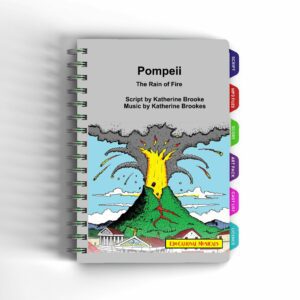Pliny the Younger who watched from the other side of the bay told us
“There had been tremors for many days previously,
a common occurrence in Campagnia and no cause for panic.”
Yes, they did!
The Pompeiians knew that to Volcanoes provided fertile land, ideal soil along with a climate for growing grapes and olives. That is why they lived there, they knew the risk.
That was until 24th August 79AD when they paid for it!
They also knew as a few years before Campania, the local region, had been struck by a violent earthquake and Pompeii suffered the most damage. They have recently excavated a villa at Oplontis, a suburb of Pompeii, that was a centre for processing agricultural products, particularly wine and oil. This showed us that it was obvious that they were still repairing the damage at the time of the eruption of Vesuvius.
Even in those days they knew that earthquakes were a warning of a possible volcanic eruption. The Campania earthquake had levelled many parts of Pompeii, they obviously knew of the risks as after that quake many people left Pompeii. At the time wealthy Romans had used Pompeii as a resort town where they had their second homes, so fearing the worst, they simply left. We know this as again excavations have found several abandon houses in disrepair, which it is assumed were just left.
However, as always happens, as they left a new group of merchants and traders took their place and started to rebuild the city. It was slow but extensive and all funded because Nero’s second wife, Poppaea Sabina, who was from Pompeii, and meant that money was directed to rebuild the city.
The effect of the early eruption
The minor eruptions in the days before were enough to persuade many thousands to evacuate the city before it finally erupted.
 Leaving, those who were either too poor to leave, or they had nowhere else to go, mostly, servants or slaves. However, a few important people stayed, as we do know that the mayor went down with his city.
Leaving, those who were either too poor to leave, or they had nowhere else to go, mostly, servants or slaves. However, a few important people stayed, as we do know that the mayor went down with his city.
I don’t believe that anybody was really surprised by the eruption of Mt. Vesuvius at Pompeii, it wasn’t a disaster that came out of nowhere. People had known the town was dangerous for years, and they had at least a day to evacuate, which it appears 18,000 people did!
We know this because before the eruption Pompeii’s population was 20,000, and we can only find that 2,000 people died in the eruption.
What happened to the rest?
Those who survived were either not in the city or carried to safety of Misenum, a port opposite Pompeii, by the Roman navy.
Then what happened to them?
This again confirms that large numbers left the city. They appear to have settled along the coast at the ancient ports of Cumae, Puteoli, Naples, and Ostia, at the mouth of the Tiber River.
Once settled Roman authorities started a series of infrastructure projects to create work for the volcanic explosion refugees. Now it is interesting to learn who actually paid for these works. We do know who claimed credit for them, the Roman Emperor Titus. So, did the money come from him? Of course not, money came, you guessed it, from Pompeii, the Emperor helped himself to the money of those who died and weren’t there to collect it. Isn’t this what all governments do? However he did gave the money to those cities with refugees, for public infrastructure projects allowing Emperor Titus to claim the credit. Has it ever been different?
In the end as well as helping Emperor Titus, it did help the refugees to settle into their new homes, so some good came of it.

If you want your children will learn a lot about Pompeii, we have published a musical Pompeii – The Rain of Fire. Specificallywritten for children to perform, with no speech more than five lines, along with twelve original songs your children will remember for ever.
To hear two of the songs and read two pages of script please go to https://www.history-portal.com/product/pompeii-main-show/
Isn’t History fun!
10 questions to discuss:
- According to Pliny the Younger, what kind of seismic activity preceded the eruption, and why wasn’t it considered alarming?
- How did Pompeii’s volcanic location benefit its residents, and what risks did it pose?
- How did previous earthquakes impact Pompeii, and what evidence suggests some residents left as a result?
- How did wealthy Romans’ actions influence Pompeii’s population before the eruption?
- What were the immediate effects of the minor eruptions preceding the main event, and how many people are estimated to have evacuated?
- Who are believed to have remained in Pompeii during the eruption, and why?
- Considering the prior warnings and evacuation, do you think the eruption was truly a “disaster out of nowhere” for Pompeii?
- Based on population estimates, where did the majority of surviving Pompeiians likely go after the eruption?
- How did Roman authorities assist the refugees, and where did the funding for these projects potentially come from?
- Do you think Emperor Titus’ actions regarding the funding were ethical, and how might the eruption and relocation have impacted the long-term lives of the refugees?
These questions encourage critical thinking and deeper analysis by:
- Challenging assumptions about the event’s suddenness.
- Exploring the interplay between natural hazards, human awareness, and choices.
- Examining the social and economic consequences of disasters and displacement.
- Considering the complexities of historical narratives and interpretations.
To find out more:
https://www.napoliunplugged.com/the-first-destruction-of-pompeii-62-a-d.html

